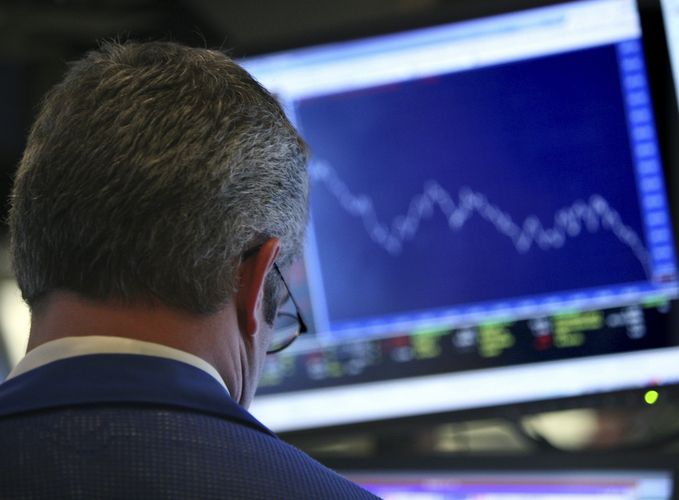
Anthony Peters SwissInvest strategist
In response to one of my comments recently, I received a note from one of the members of the equity tribe demanding of me why I, as a bond beast, had the temerity to be writing on stock markets and not on bond markets. The answer is pretty simple: bond markets are boring and equity markets are currently in the driving seat. However, whether they know where they are going and why is a different matter entirely.
I have always been somewhat sceptical of the value of the Empire State Manufacturing Survey as it is both a parochial and a volatile series and as such doesn’t, in my view, add a huge amount in markets’ attempts to calibrate their respective compasses but it has now become a firm fixture on the statistics calendar, so we’ll have to live with it.
Anyhow, since its reading of 9.46 in July, it has been in decline and on Friday reported in for November at -2.21, a far cry from the forecast 5.00. At the same time, the broader measures such as October US Industrial Production and Capacity Utilisation also disappointed, the former having been forecast at +0.2% but reading at -0.1%.
…rallying the Dow by 85½ points and the S&P by 7½ points in anticipation of delayed tapering because of a miserable Empire State Survey reflects, in my opinion, a pretty poor usage of Wall Street’s collective brain power.
Despite news which should have the heart skip a beat, equity markets didn’t appear to give a fig and both the Dow and the S&P continued their inexorable rises to new all time highs. The glass half full brigade and the glass half empty brigade are clearly in a clinch but the former is in the ascendancy. One strategist I speak to a lot pointed to the way recent stats have been looking and wondered, more than just rhetorically, whether we might not be looking as some fairly clear end-of-cycle indicators. It used to be at this point than the litmus paper would be stuck into the business inventory jar and where a build-up would be seen as a sign that retail demand was waning.
Alas, nowadays only very few appear to care much about such real economic measures and markets are driven by whether or whether not and when or when not the Federal Reserve will begin to withdraw stimulus. The obsession with tapering both in terms of dates and quantities is quite depressing for as Franklyn D Roosevelt famously said in his 1933 inauguration speech, we have nothing to fear but fear itself. Given the amount of doubt as to what good quantitative easing has done the economy and what influence it has had on the recovery, the logical conclusion would have to be that its withdrawal will have little or no effect either.
And yet, whole forests have been sacrificed for the benefit of endless commentaries on the subject of when tapering will begin with no notable suggestions of what the actual effects of such a reduction in stimulus will be. Hence, rallying the Dow by 85½ points and the S&P by 7½ points in anticipation of delayed tapering because of a miserable Empire State Survey reflects, in my opinion, a pretty poor usage of Wall Street’s collective brain power. Should the rally be due to anything other than the weak stats, the usage would be even worse.
Escape velocity
In some respects, there are far more worrying things out there, not least of all the slowing of the Japanese Abenomic boom. Growth is still looking pretty impressive but there are now some lingering doubts emerging as to whether the economy can achieve escape velocity. 100 ¥/US$ has always had a magical feeling about it. When, after four years of sub-¥100 strength, it finally broke back above that in May, the predictions for the future of Japan were dire. Then came Shinzo Abe with his three arrows and the currency rallied back in June to a sub ¥95 level. Now it is clearly weakening again and at the same time the ECB is busily doing what it can to reverse some of the euro strength which its very own policy had encouraged.
If the race to the bottom is on again, then the US is in the weakest position.
At US$41bn, the September trade balance was not pretty but not catastrophic either – during the peak of the credit fuelled consumer boom during the middle of the last decade, the monthly reading was of a deficit regularly above US$60bn. The improvement began during the recession with falling imports and has recently been driven by rising exports but a more persistent rise in the dollar against both Yen and euro would not be conducive to a further improvement
Recent US criticism of Germany for exporting more than its fair share had the Germans themselves in stitches. As one commentator very succinctly put it: “Vot ken vee do if zey vant to buy our stuff??” I was reminded of the 90s when the Yanks were getting all hot under the collar about Japanese car exports to the US and the lack of reciprocal demand. I recall suggesting at the time that if the Americans were so serious about exporting cars to Japan, a good place to start would be to produce a right-hand drive models. Doh!
Alas, returning to the criticism that I am looking at equities and not bonds, there is little to add. Up a bit, down a bit, maybe a bit sideways. Rates remain unattractive, credit spreads are tighter than they should be as the technical shortage of supply in the secondary markets has investors fighting over new issuance simply for the sake of it and issuers taking the money at the price they can get it. We should have 10 busy days ahead of us until Thanksgiving and they we can have another think. Until then, keep on taking it down.
